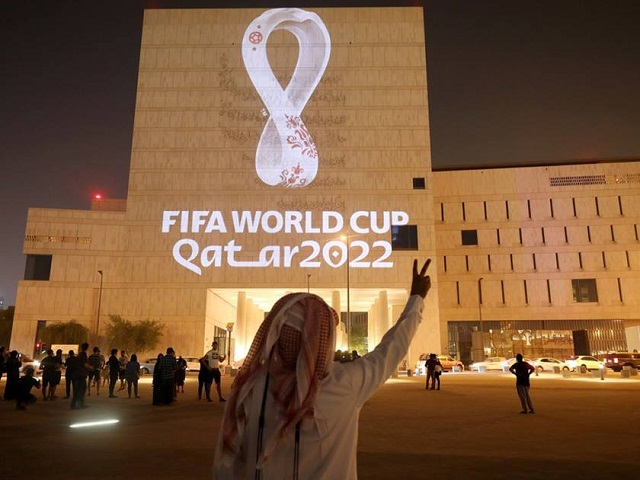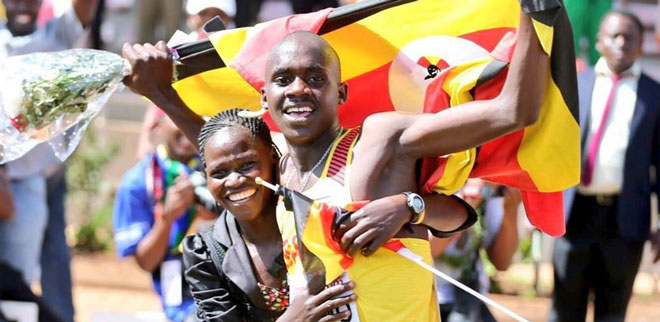
Doha, Qatar | QNA | After years of hard work and planning based on innovation and uniqueness in various stages of preparations, the State of Qatar fulfilled its promises and silenced the voices of critics and skeptics by presenting the FIFA World Cup Qatar 2022 which kicked off in November 2022 with a dazzling opening ceremony that combined the Arab, Islamic and Gulf culture.
Twelve years before the opening ceremony, Qatar submitted an integrated file in the race to win the honor of hosting the tournament, and has managed to outdo the most prominent world countries, including USA, Japan, South Korea and Australia after its file excelled in diversity and uniqueness, especially in the area of legacy and sustainability.
The first steps of the successful organization of Qatar’s tournament came after the issuance of the Amiri decree No. 27 in April 2011 to establish the Supreme Committee for Delivery & Legacy (SC) that has was granted the full discretion and essential powers to achieve its goals that primarily include the importance of setting the general strategies and policies of the State with respect to the tournament 2022, in addition to finding the conducive environment to organize and accomplish the tournament from all aspects, including the legal, organizational, urban, social and economic, and determine the sufficient frameworks to support and encourage various events and activities relevant to the tournament.
For the sake of moving forward with this dream and providing the best appropriate circumstances to organize the tournament, SC has set different plans and unique programs to have a successful sporting event, where the start was the announcement of designing the Al Janoub Stadium in 2013, whose innovative design embodies the Qatari heritage through its image inspired by the traditional dhow boats, where the construction work commenced in 2014.
The Qatari preparations to have a successful tournament were not only at the level of the tournament, but transcended that level to touch on the infrastructure that witnessed a boom in multiple fields, the most prominent of which was the finalization of the construction of Hamad International Airport (HIA) to officially embark on receiving the flights in May 2014, ushering a new stage in the world of transportation and travel, as this vital and strategic project is one of the most prominent grand projects that served the success of the tournament through receiving tens of thousands of fans who had been keen to come to Doha to watch and follow-up on the global event.
However, the infrastructure, construction and stadiums were not enough to have a successful tournament, and SC was unequivocally aware of this, and it embarked upon introductory tours in 2015 to introduce its multiple activities for societal communication which represented an opportunity to introduce the tournament, along with the traces of the sustainable legacy the tournament would leave for the State of Qatar and the whole region, as well as introducing the local community to the volunteering initiatives organized by SC to be an effective partner in the preparation and organization of the tournament.
Within the framework of the introduction tours, SC organized “Qatar House” on the sidelines of Rio de Janeiro 2016 Olympic Games, which included multiple events to introduce the State of Qatar and the tournament to the world, as the event witnessed an effective presence through a huge turnout of visitors from the Brazilian masses to have a glimpse of the preparations made by the State of Qatar to organize one of the most important global soccer events.
The Qatar House included numerous models of the tournament stadiums, including Ahmed bin Ali Stadium, along with multiple events that provided a full perception of the nature of preparations that were underway in the State of Qatar to host such a global event, and later the house was converted into bilingual public school dubbed “Eleva”, because this was a desire of the State of Qatar to leave a special and permanent trace on Qatar’s tournament in this city.
Perennially, the success started to emerge and the dream of the tournament appears publicly with the inauguration of the Khalifa International Stadium on May 19,2017, after it had been renovated and equipped with 12 seats to be 40,000 seats, specially that such stadium, whose construction dates back to 1976 occupies a special status in the hearts of the Qatari people owing to its memories engrained in their minds, as the stadium has embraced multiple local and regional tournaments.
On November 26,2017, SC revealed that it had designed the Stadium 974, the seventh stadium of the tournament which constituted a boom in the construction of the stadium owing to its innovative design, which was constructed through utilizing the sea freight containers, in addition to the disassembled materials, including walls, ceiling and seats that were combined together to form a modern design for a curved cube with a distinctive look.
In addition, SC proceeded with its efforts with regard to the tournament stadiums, where the committee revealed the design of the Lusail Stadium on December 15,2018, which is one of the largest tournament stadiums combining in its design the ancient past of the State of Qatar and its bright future, and accommodates over 80,000 fans. It is the same stadium that will host, in a few days, the final game on December 18 that coincides with the national day of the State of Qatar.
Over the time, the steps of the successful organization of the tournament have been constant, and in March 2019, Al Janoub Stadium was inaugurated in Al Wakra city as the second tournament stadiums to be on standby, and later on December 3,2019, the official emblem of the tournament was revealed that came through displaying it on giant screens in several prominent landmarks in the State of Qatar, where many Arab and world countries had simultaneously participated in showcasing the emblem when it was being displayed in Doha, and was screened in Russia, Kuwait, Oman, Lebanon, Jordan, Tunisia, Algeria, Morocco, Iraq, Palestine, Libya and Sudan.
In addition, the emblem design reflected the overall dimension of the tournament as a platform for the convergence of a multitude of cultures from around the world, and it incorporates multiple elements inspired by the Qatari and Arab culture that harmonizes with the components of football game.
The tournament logo was inspired by the illustrious woolen shawl in the Arab world, which was decorated with oriental inscriptions, and took the shape of the number 8, denoting the tournament stadiums hosting the games. It is also inspired by the multiple cultures in Asia Continent, which honors the hosting of the second edition of the World Cup finals, along with the rich diversity that enriches the community in the State of Qatar.
The success journey has been constant with the completion of the tournament’s stadiums, while on June 15,2020, SC announced that the Education City Stadium was on standby, the third tournament stadiums to be fully ready and specifically designed to be a sport edifice and a witness to the history of this exceptional tournament.
Exactly, two years before the final match of the tournament, and on December 18,2020, that coincides with the National Day of the State of Qatar, the fourth tournament stadium Ahmed bin Ali Stadium was inaugurated after being renovated, along with Al Janoub Stadium and Education City Stadium.
On October 22,2021, Al Thumama Stadium was inaugurated whose shape was inspired by “Qahfiya”, which was known to be worn on the head by the population of the State of Qatar and the Arab Gulf region.
The stadium is located 12 kilometers south of Doha and in close proximity to HIA. It combines authenticity and contemporary design, honoring the authentic Arab heritage that It has been passed down from generations in Qatar and the region over the decades, as the stadium was designed by Qatari designer Ibrahim Al Jaidah.
On November 21, 2021, one year before the launch of the global event, the official countdown for the start of the world cup was revealed in a ceremony that was held on Doha Corniche and had dazzled the world within the framework of the final preparations for the tournament launch, where the official countdown clock was inspirationally designed combining the elegant curves of the continuous ring that forms the World Cup logo, along with the ancient hourglass that was used to measure time, both reflect the interconnected and convergent nature of the tournament.
The most important rehearsal in the long march for the success of the World Cup was the organization of the FIFA Arab Cup Qatar 2021, which was known as the Arab tournament during the period from Nov. 30, until Dec. 18,2021, which is the tenth edition of the tournament that was held for the first time and organized by FIFA, and represented a successful emulation for the preparations of Qatar to organize the world cup tournament and a perfect opportunity to promote the preparations for hosting the tournament.
During the Arab tournament, SC had inaugurated and operated Al Bayt Stadium in Al Khor city that witnessed the ceremonies of the tournament opening and closing, along with Stadium 974, which hosted the tournament’ games until the third and fourth place match.
A few months before the start of the event, SC inaugurated Lusail Stadium on September 9, 2022, the largest tournament’s stadiums, which is capable of accommodating over 80,000 fans, in the Lusail Super Cup between Al Hilal SFC, the Saudi League champion, and Zamalek SC, the Egyptian League champion, in the presence of substantial number of masses that reached 78,000 spectators, and it was a good emulation of the atmosphere of the World Cup.
With the completion of all preparations, the State of Qatar has had a powerful infrastructure that included an international airport (2014), an international port (2017), huge roads and an integrated Metro network (2019), which is an indicative of the country’s capability to attract the foreign investments, not only in gas and oil sector, but also in the financial, trade and sports sectors as well.
The great success achieved by the tournament is conspicuously demonstrated in the commendation launched by the newspapers and the international networks on daily basis, as well as the substantial number of the fans who are following up on the global event, where the number followers on social media platform has reached 135 million since the tournament inception, with an increase of 15 million compared to the previous edition of the tournament.
As we are now on the cusp of bidding farewell to the tournament, Qatar has won the bet whether in terms of preparation, or organizing the global sporting event, where the country has been turned into a hub for the global masses who toured its sprawling parts in north and south to follow-up on the tournament and its events, and many of them managed to watch more than one game per day to enjoy the associated events, along with the Arab hospitality and generosity.
 The Independent Uganda: You get the Truth we Pay the Price
The Independent Uganda: You get the Truth we Pay the Price




I thoroughly enjoyed your article. This is an absolute masterpiece which I was looking for.